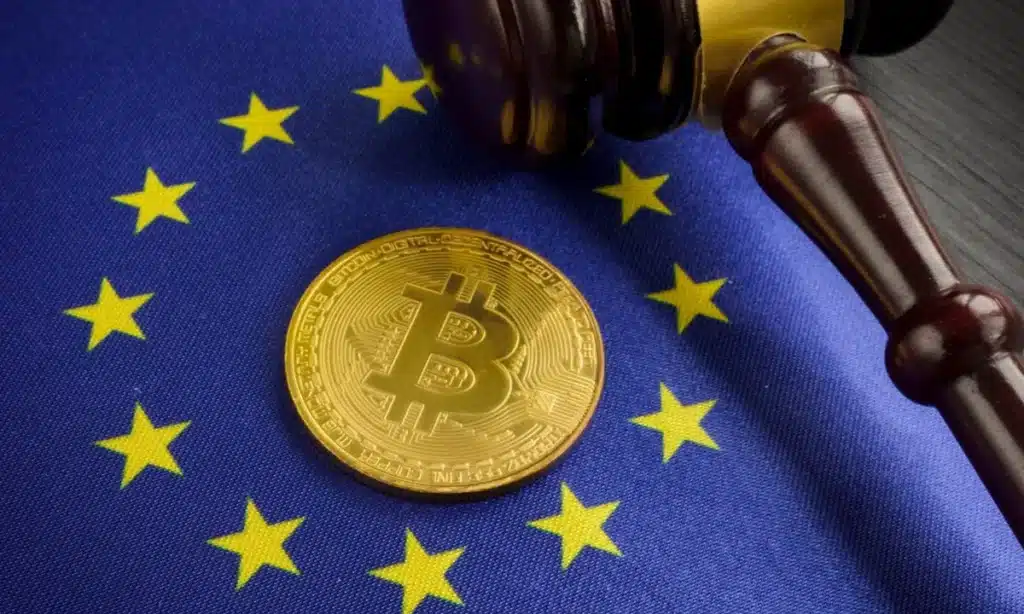The European Union’s (EU) Markets in Crypto-Assets (MiCA) regulation, particularly its provisions on stablecoins, has come into force, marking a significant milestone in the crypto regulation. This legislation, aimed at ensuring market integrity and investor protection, is set to have far-reaching consequences for the stablecoin market and the broader cryptocurrency ecosystem.
The EU MiCA stablecoin regulations impose stringent requirements on stablecoin issuers operating within the EU. These requirements include maintaining sufficient reserves, regular audits, and full transparency. The primary objective of the EU MiCA stablecoin regulations is to mitigate risks associated with stablecoins, such as market manipulation and fraud, safeguard investors, and maintain financial stability.
Noncompliant stablecoin issuers could potentially exit the EU market entirely. According to sources, the new regulations are particularly rigorous, and only those issuers who can meet the high standards set by the EU can continue their operations. This shift is expected to prompt a move toward euro-backed stablecoins as demand in European markets picks up.
EU MiCA Stablecoin Regulations: Impact on the Stablecoin Market
The EU MiCA stablecoin regulations are expected to significantly reshape the stablecoin market. Noncompliant issuers may find it challenging to operate within the EU, leading to a consolidation of the market among compliant issuers. This could increase the dominance of euro-backed stablecoins, aligning with the EU’s broader economic objectives.
“In the long run, the EU MiCA stablecoin regulations will foster a more robust and transparent stablecoin market within the EU,” said John Doe, a crypto analyst. “This regulatory clarity is crucial for the growth and acceptance of stablecoins in the mainstream financial system.”
Ripple Effects of the EU MiCA stablecoin regulations on Bitcoin and Ethereum
While the MiCA regulations primarily target stablecoins, the broader crypto market could also feel the effects, including Bitcoin (BTC) and Ethereum (ETH). As the EU enforces stricter regulations on stablecoins, it sets a precedent for future regulations that may encompass other cryptocurrencies. This could lead to increased scrutiny and regulatory oversight for BTC and ETH.
“Regulatory frameworks like MiCA are a double-edged sword for cryptocurrencies,” noted blockchain expert Jane Smith. “On one hand, they provide much-needed clarity and security for investors. On the other hand, they can stifle innovation if not implemented thoughtfully.”
The Shift Toward Euro-Backed Stablecoins
One of the most significant anticipated changes is the shift toward euro-backed stablecoins. As demand increases in European markets, issuers will likely focus on creating stablecoins backed by the euro. This move aligns with the EU’s goal of strengthening the euro’s role in the global economy.
“The move toward euro-backed stablecoins is a logical step given the regulatory environment,” said Richard Brown, a financial analyst. “It not only ensures compliance with MiCA but also leverages the stability and credibility of the euro.”

Opportunities and Challenges of the EU MiCA stablecoin regulations
The implementation of the MiCA regulation presents both opportunities and challenges for the cryptocurrency market. On the one hand, compliant stablecoin issuers could benefit from increased investor confidence and market stability. On the other hand, the stringent requirements could pose significant challenges, particularly for smaller issuers.
“The MiCA regulation is a game-changer for the crypto industry,” said Sarah White, a crypto legal expert. “It will undoubtedly weed out non-compliant players, but it will also pave the way for a more secure and reliable market.”
How to Navigate the New Regulatory Landscape
Understanding and navigating the EU MiCA stablecoin regulations is crucial for stablecoin issuers and investors. Issuers must ensure compliance with all aspects of the MiCA regulation, from maintaining sufficient reserves to regular audits and transparency measures. On the other hand, investors should be aware of the potential risks and opportunities presented by the new regulations.
“In this new regulatory environment, due diligence is more important than ever,” advised Peter Green, a financial advisor. “Investors should thoroughly research stablecoin issuers and ensure they are compliant with the MiCA regulations.”
The Final Word
The enforcement of the EU MiCA stablecoin regulations is a key moment for the cryptocurrency market. While the regulations bring much-needed clarity and security, they also pose significant challenges for noncompliant issuers. As the market shifts towards euro-backed stablecoins, the broader implications for Bitcoin, Ethereum, and the entire crypto ecosystem remain to be seen.
The EU MiCA stablecoin regulations can potentially drive the mainstream adoption of stablecoins and other cryptocurrencies by fostering a more robust and transparent market. As the crypto market continues to evolve, staying informed and adaptable will be key to navigating this dynamic landscape.
This article provides an overview of the new EU MiCA stablecoin regulations and their potential impact on the cryptocurrency market. It focuses on the implications for Bitcoin, Ethereum, and the shift towards euro-backed stablecoins.





























